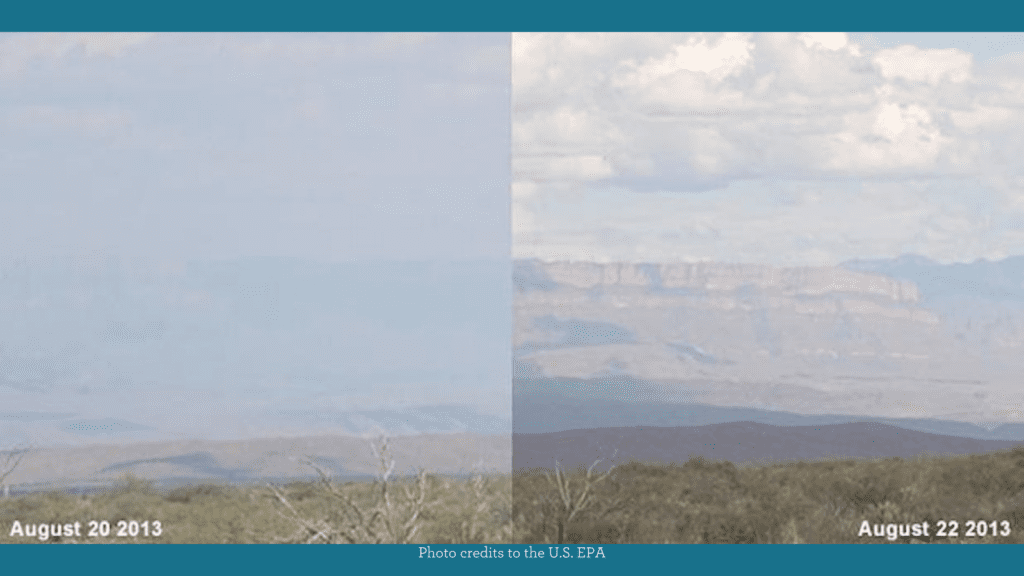Image above: Photo credits to the U.S. EPA. Regional Haze drastically affects visibility of our natural parks.
On April 19, 2023, the US Environmental Protection Agency (EPA) published a draft rule to reduce Texas coal plant pollution after the state failed to produce an adequate plan. Air Alliance Houston, member of the W.A. Parish opposition group, celebrated this announcement as the rule could have enormous consequences for the dirty WA Parish coal plant.
The federal Clean Air Act requires states to protect communities and national parks and wilderness areas across the central United States. Regional haze is visible pollution caused by sulfur dioxide emissions from power plants and industrial sources which poses a public health threat and reduces visibility in our most revered sites. Because the haze plan from the Texas Commission for Environmental Quality (TCEQ) was so inadequate, the law required EPA to step in to propose a strong draft rule that will reduce Texas coal plant pollution– which would require six of the largest Texas coal plants to collectively cut their sulfur dioxide pollution to 80,000 tons per year. This would nearly halve the state’s overall sulfur dioxide emissions from the biggest haze polluters.
The EPA will be accepting written comments on their draft rule until July 3, 2023. Verbal comments will be accepted at a public meeting with the EPA on May 19. Register by May 16 to attend their virtual meeting and to pick your preferred time slot to give your verbal comments.
Sulfur dioxide in gas form converts into fine airborne solids known as particulate matter, which can travel long distances and create haze and unhealthy air for nearby and faraway communities. Our W.A. Parish opposition group recognizes that communities of color are more commonly located near pollution sources, like the W.A. Parish coal plant in Fort Bend County, just outside of Houston.
Fort Bend County has higher particulate matter readings on average than both the state and the U.S. Particulate matter, like that which W.A. Parish spews into the Fort Bend Community, is small enough to be inhaled and lodge itself into lung tissue causing scarring and can lead to heart disease, and respiratory illnesses. The leading causes of death in the Fort Bend area include heart and lung disease. Haze pollution also decreases visibility in Big Bend National Park by as much as 70% some days. Texans have a right to observe our most treasured vistas, and to enjoy the several wonders of our national parks.
The W.A. Parish opposition group celebrates the EPA’s commitment to stepping in to protect our communities where TCEQ and NRG Energy have not, and to ensure that everyone has access to clean air.
The W.A. Parish opposition group continues to work on closing the Parish coal units alongside residents who have fought for cleaner air for decades since Parish began operations in 1977. The proposed rule would require all coal plants in Texas, including Parish, to install or upgrade their pollution controls to meet modern standards. As W.A. Parish has not recently been required by law to upgrade their facilities, these upgrades should cost NRG Energy $500 million at a minimum. This substantial financial setback may be enough to shut down the coal plant altogether. This would help save lives as well as clear Texas skies.
While parts of the proposed rule – such as requirements for particulate matter and nitrogen oxide pollution – could have been stronger, the draft EPA rule is foundational for improving air quality.
Groups expect EPA to finalize the haze rule later this year.

